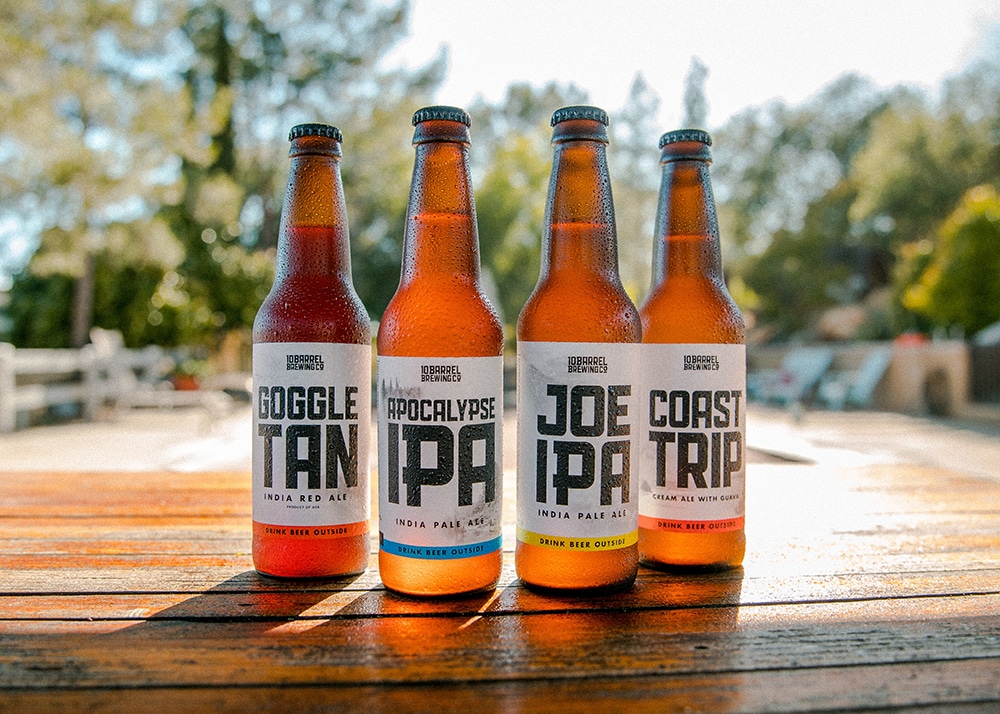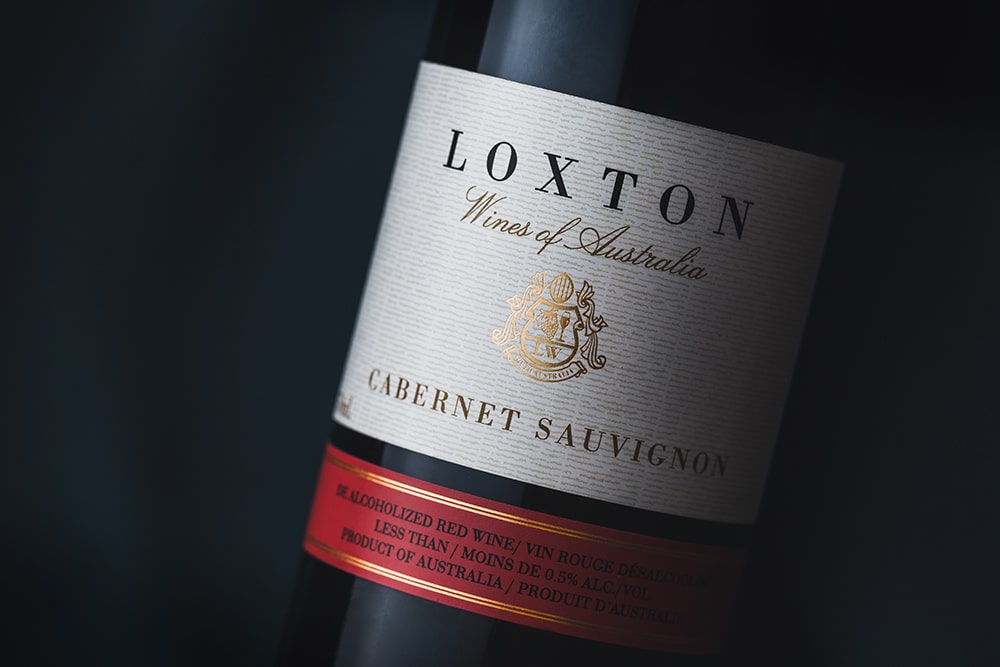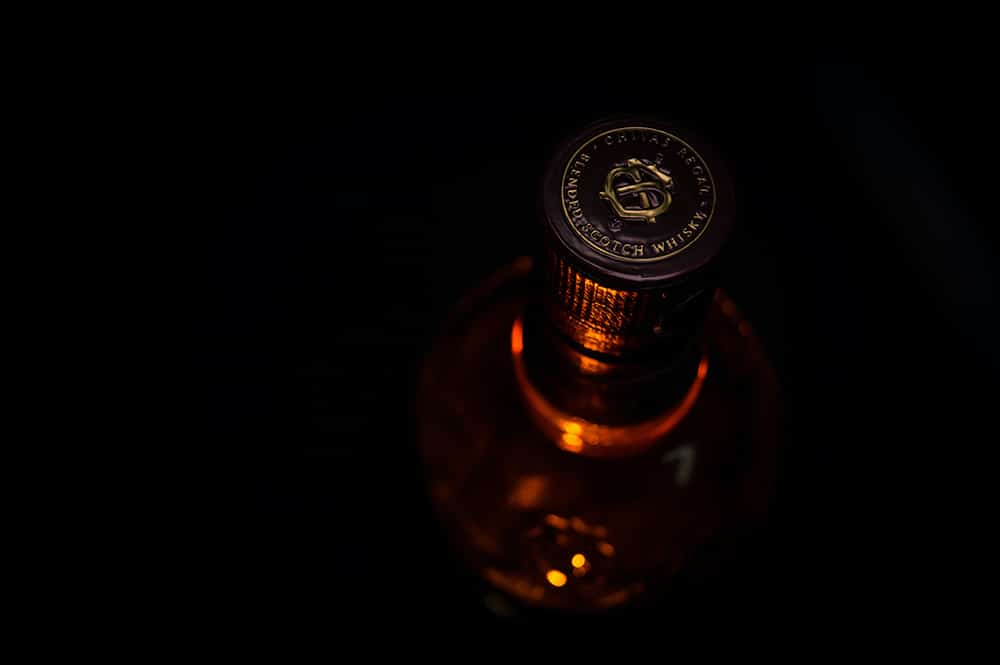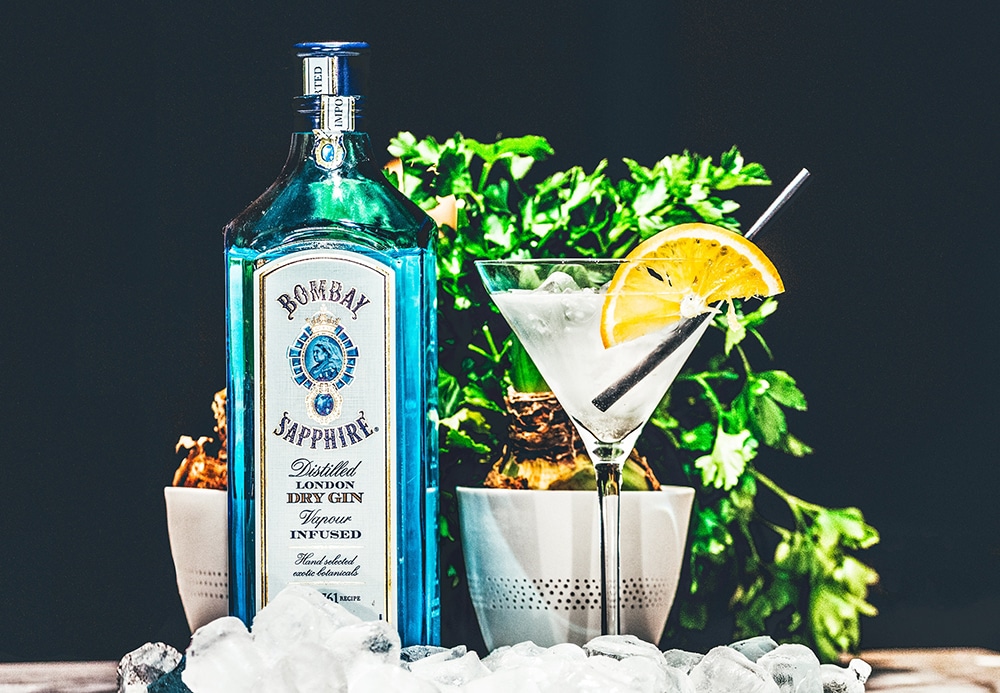
The labeling of alcoholic beverages might seem simple from the outset. After all, so far there is no nutritional facts requirement for alcohol and the elements of most of these beverages has a narrow list of inputs. But there are characteristics of a wine, beer, or spirits label that you have probably never noticed and disclosure to be made that you might not even consider.
Each country regulates alcoholic beverage labels differently. In the United States the Federal Alcohol Administration Act (FAA) regulates the sale of both domestic and imported alcohol and leaves the regulating of bottle and packaging labeling to the Alcohol and Tabacco Tax and Trade Bureau or TTB. A few products that you might think of as beer and wine fall outside of the TTB jurisdiction, but most are covered under their regulatory power. The TTB website provides extensive information about labeling for beer, wine and spirits, which we’ve tried to break down into layman’s terms below. There are lots of additional links included for additional information.
Below we break down the requirements per beverage type, so you can skip to the section that directly pertains to your business:
- Beer
- Wine
- Distilled Spirits
Beer Labeling Requirements
1. Brand Name
This first requirement is pretty easy. The brand name is generally the most prominent piece of information on the label, and must be the name under which the beverage it labels is marketed.
BUT The brand name can’t be misleading about the age, origin or identity of the beer.
Example: You can’t call your company Stout Makers and then have a line of pale ales or call your company German Beer if it’s made in Philadelphia, BUT you can keep your brand name if you qualify it with a “brand” at the end of it, or by adding an additional statement that clears up the confusion.
2. Class and Type Designation
This means the specific identity of the malt beverage, so you can simply say “malted beverage” or go further and say “ale” or even further and say “Indian Pale Ale” (For all the types and classes of malted beverages accepted by the TTB, take a look at the chart in this document.)
3. Name and Address
For domestic malt beverages: The name and address of the producer/bottler or packer must appear on the label optionally preceded by an appropriate explanatory phrase such as “BREWED AND BOTTLED/PACKED BY,” “BREWED BY” or “BOTTLED/PACKED BY”
For imported malt beverages: The name and address of the importer must appear on the label preceded by an appropriate explanatory phrase such as “IMPORTED BY,” “SOLE AGENT” or “SOLE U.S. AGENT”
See further definitions of name and address and what is permissible here.
4. Net Contents
The net contents is the amount of consumable product within a container. There are no set standards of fill for malt beverages and they can be packaged in any size container. But, the net contents must be in U.S: measurements (and additionally in metric if you choose to do so). The TTB provides a chart here on net contents for different size malt beverages and how to label them.
5. Alcohol Content
The alcohol content is the percent of alcohol per volume of liquid. A statement of alcohol content is optional unless it is required by or prohibited by State law. Unless that same State law says something different, alcohol content must be expressed in percent by volume.
Alcohol content must be shown as:
“ALCOHOL (ALC) % BY VOLUME (VOL)” or
“ALCOHOL (ALC) BY VOLUME (VOL) %” or
“ % ALCOHOL (ALC) BY VOLUME (VOL)” or
“ % ALCOHOL (ALC)/VOLUME (VOL)”
Alcohol content must be expressed to the nearest 0.1% EXCEPT for malt beverages containing less than 0.5% alcohol by volume, then the alcohol content may be expressed to the nearest 0.01%
These terms can also be used to describe malt beverages on labeling:
- Low alcohol less than 2.5% alcohol by volume
- Reduced alcohol less than 2.5% alcohol by volume
- Non-alcoholic is less than 0.5% alcohol by volume (The statement “CONTAINS LESS THAN 0.5% ALC BY VOL” must appear with “NON-ALCOHOLIC” on the label)
- Alcohol free has no alcohol (0.0% alc by vol) (The alcohol content statement “0.0% ALC BY VOL” may not appear on the label unless the malt beverage is labeled “ALCOHOL FREE”)
For malt beverages containing 0.5% or more alcohol by volume – A tolerance of 0.3% above or below the alcohol content stated on the label is permissible BUT the following rules must be followed:
- A malt beverage labeled as containing 0.5% or more alcohol by volume may not contain less than 0.5% alcohol by volume
- A malt beverage labeled as “LOW ALCOHOL” may not contain 2.5% or more alcohol by volume.
- A malt beverage labeled as “REDUCED ALCOHOL” may not contain 2.5% or more alcohol by volume
- For malt beverages containing less than 0.5% alcohol by volume – The actual alcohol content may not exceed the labeled alcohol content
6. FD&C Yellow #5 Disclosure
FD&C Yellow #5 is a common colorant added to all kinds of food items. It has been shown to trigger allergies in some consumers. Therefore, a “CONTAINS FD&C YELLOW #5″ must appear on the label of any malt beverage containing FD&C Yellow #5
7. Saccharin Disclosure
Saccharin is a sweetener added to drinks, sweets and medicines. It’s about 300-400 times sweeter than regular sugar but has been shown to have adverse effects on lab animals. Therefore, “USE OF THIS PRODUCT MAY BE HAZARDOUS TO YOUR HEALTH. THIS PRODUCT CONTAINS SACCHARIN WHICH HAS BEEN DETERMINED TO CAUSE CANCER IN LABORATORY ANIMALS.” must appear on the label of any malt beverage containing saccharin.
8. Sulfite Declaration
Sulfites (sulfur dioxide) are naturally occurring chemical compounds found in hops and grapes (wine). Additional sulfites are often added to alcohol to retain its color and freshness. Because of research that shows some consumers are sulfite sensitive, there are now stricter regulations in reporting its use in products. “CONTAINS SULFITES” or “CONTAINS (A) SULFITING AGENT(S)” or identification of the specific sulfiting agent(s) must appear on the label of any malt beverage containing 10 or more parts per million (ppm) of sulfur dioxide
9. Aspartame Disclosure
Aspartame is another artificial sweetener that often appears under the name Nutrasweet or Equal. Aspartame causes headaches in some consumers. The words “PHENYLKETONURICS: CONTAINS PHENYLALANINE.” must appear on the label of any malt beverage containing aspartame.
10. Health Warning Statement
The statement below must appear on all alcohol beverages for sale or distribution in the U.S. containing not less than 0.5% alcohol by volume, intended for human consumption and bottled on or after November 18, 1989: GOVERNMENT WARNING: (1) According to the Surgeon General, women should not drink alcoholic beverages during pregnancy because of the risk of birth defects. (2) Consumption of alcoholic beverages impairs your ability to drive a car or operate machinery, and may cause health problems.
11. Country of Origin
The country where your beverage is produced, this is required under U.S. Customs Service regulations for any imported malt beverage
The formatting, type size, legibility and placement for each of these items is listed within this step by step guide for labeling malt beverages provided by TTB.
For all kinds of additional information from TTB about beer, including information on the label approval process and allowable changes to already approved labels check out their resources on beer labeling.
Wine Labeling Requirements
Much of what is required for beer is also required for wine labeling, sometimes with just slight variations.
1. Brand Name
Same as beer, brand name is pretty self-explanatory, but there are a few additional details for wine sellers.
Note: If the wine is not sold under a brand name, the name of the bottler, packer or importer (if shown on the brand label) becomes the brand name.
The brand name can’t be misleading about any element or characteristic of the wine, can be qualified by adding Brand just like with beer, but qualification with the word “BRAND” is NOT an option in the case of a brand name of viticultural significance (For more on Geographic Brand Names click here).
You will also want to look at the following laws about wine labeling here: 27 CFR 4.27, 27 CFR 4.38(f), 27 CFR 4.33(b) and 4.39(i).
In general, a brand name that includes a vineyard, orchard, farm, or ranch name is acceptable:
- If not less than 95 percent of the wine was produced from primary winemaking material grown on the named vineyard, orchard, farm, or ranch; OR
- If the company name or trade name shown in the mandatory name and address statement on the label is identical to the brand name that includes a vineyard, orchard, farm, or ranch name.
More info on geographic brand names
2. Class and Type Designation
Class is the larger umbrella description of wine that might include “table wine” or “rosé wine” and type is more specific like Burgundy or Chianti.
TBB offers a list of classes and types of wine (which they warn is not exhaustive) here.
3. Alcohol Content
Legally, numerical alcohol content statements are required on wine labels
One exception is wine containing 14 percent or less alcohol by volume. In this case the alcohol content can be included but isn’t necessary as long as the type designation “table wine” or “light wine“ appears on the label as the mandatory class/type designation.
Also, if table wine or light wine is made from something other than grapes, “TABLE WINE” or “LIGHT WINE” must be qualified with the specific or general class of the commodity from which the wine was made. Ie “CHERRY TABLE WINE” or “LIGHT RICE WINE” (Once again, take a look at the chart on classes and types of wine here.)
For specifics of how to express the numerical value of the Alcohol Content Statement as well as examples see The Form of Numerical Alcohol Content Statement here.
4. Percentage of Foreign Wine
This is a statement of the percentage and origin of foreign wine (e.g., “30% GRAPE WINE FROM ITALY”) which is required on blends of U.S. and foreign wine if the presence of foreign wine is mentioned anywhere on the label.
5. Name and Address
For U.S. wine this is fairly easy — the name and address of the bottler or packer must appear on the label, preceded by the phrase “bottled by” or “packed by.” There are few more specifics for imported wines and other, optional phrases you can use for U.S. wines that you can see here.
6. Net Contents
This just tells the consumer how much consumable product is in the bottle. There are further details about standards of fill for wine and how to express them here.
7. FD&C Yellow No.(or #) 5 Disclosure
FD&C Yellow #5 is a common colorant added to all kinds of food items. It has been shown to trigger allergies in some consumers. Therefore, a “CONTAINS FD&C YELLOW #5″ must appear on the label of any wine containing FD&C Yellow #5
8. Declaration of Cochineal Extract or Carmine
Cochineal and Carmine are other color additives sometimes added to wine. Labels must disclose this information on a front label, back label, strip label, or neck label, prominently and conspicuously, using the colorants’ common names (“cochineal extract” or “carmine”), where either of the coloring materials is used in a product on or after April 16, 2013.
9. Sulfite Declaration
The same as with beer, any wine that contains 10 or more parts per million of sulfur dioxide must include “CONTAINS SULFITES” or “CONTAINS (A) SULFITING AGENT(S)” or the identification of the specific sulfiting agent(s) on its label.
For wines with less than 10ppm, the following should be included on the label: “CONTAINS NATURALLY OCCURING SULFITES” or “NO SULFITES ADDED, CONTAINS ONLY NATURALLY OCCURRING SULFITES”
TBB won’t approve your label without some kind of sulfite statement, to avoid putting it on your label you must submit to testing in the TBB laboratory. Producers of domestic wines should contact the TTB Compliance Laboratory and importers should contact the TTB Beverage Alcohol Laboratory to request a sulfite waiver analysis for submission with their COLA (Certificate of Label Approval) applications.
If the label applicant submits a TTB Laboratory analysis establishing that the wine contains less than 10 ppm sulfur dioxide, the label is not required to include any sulfite statement. However, such a wine can be labeled with an optional statement such as:
Where the TTB Laboratory analysis shows less than 10 ppm sulfites: “Contains Less than 10 ppm Sulfites”, or “Contains Less than 10 ppm sulfur dioxide.”
Where the TTB Laboratory analysis detects no sulfites: “No Sulfites [Sulfur Dioxide] Detected” or “No Detectable Sulfites [Sulfur Dioxide].”
10. Health Warning Statement
The statement below must appear on all alcohol beverages for sale or distribution in the U.S. containing not less than 0.5% alcohol by volume, intended for human consumption and bottled on or after November 18, 1989: GOVERNMENT WARNING: (1) According to the Surgeon General, women should not drink alcoholic beverages during pregnancy because of the risk of birth defects. (2) Consumption of alcoholic beverages impairs your ability to drive a car or operate machinery, and may cause health problems.
11. Country of Origin
The country where your beverage is produced, this is required under U.S. Customs Service regulations for any imported wine.
For type size, formating or placement you can go here for more details: https://www.ttb.gov/images/pdfs/wine_bam/c1-mandatory-label-information.pdf or here https://www.ttb.gov/images/pdfs/wine_bam/c2-type-size-and-legibility-requirements.pdf
See some sample wine labels here: https://www.ttb.gov/images/pdfs/wine_bam/c10-sample-wine-labels.pdf
The TTB includes additional information for optional statements that a brand may want to include about the origin of the wine or the vintage date, and additional guidelines for what kind of process can be used on “natural” wines. They also provide a wine labeling checklist for brands.
Distilled Spirits & Liqueurs Labeling Requirements
1. Brand Name
Same rules apply as with beer and wine, the brand name must be prominent, the same name the spirit is marketed under, and it can not be misleading to the consumer.
2. Class and Type Designation
For distilled spirits, the larger class category might include something like “whisky” while the type might be “Straight Bourbon Whisky.” Just as for wine, the TBB provides a chart on the classes and types.
3. Alcohol Content
Alcohol content, or the percent of alcohol by volume, should be expressed as: “ % ALCOHOL (ALC) BY VOLUME (VOL)”
For products containing solid material, the alcohol content must be stated as “BOTTLED AT % ALCOHOL (ALC) BY VOLUME (VOL).” (“Rock and Rye” is an example of a product containing solid material. It contains rock candy or sugar syrup and often fruit)
Alcohol content can also be expressed in degrees proof in addition to the required alcohol by volume statement.
If the proof is shown it must appear at least once on the FRONT of the container with the alcohol by volume statement and be set off by parentheses, brackets, dots or otherwise distinguished from the alcohol by volume statement and may not be more prominent than the alcohol by volume statement.
TOLERANCES
The labeled alcohol content must accurately reflect the actual alcohol content of the product. Losses occurring during bottling will not affect the labeled alcohol content provided the loss does not exceed:
0.25% alcohol by volume for spirits containing solids in excess of 600 mg per 100 ml
0.25% alcohol by volume for spirits bottled in 50 ml and 100 ml containers
0.15% alcohol by volume for all other spirits
4. Name and Address
This includes the company or corporate name or trade name identical to that shown on the basic permit and the principal business address. Here are a few additional details on what is appropriate for domestic and imported spirits.
5. Country of Origin
The country of origin must be listed on the labels of any imported spirits whether bottled, packed or filled prior to or after importation.
6. Net Content
Distilled spirits must be bottled, packed or filled in a metric standard of fill. See the standards of fill for distilled spirits here.
7. Presence of Coloring Materials
Any additional coloring agents included in a distilled spirit must be indicated on the label. Some examples include: “COLORED WITH CARAMEL” “CERTIFIED COLOR ADDED” or “COLORED WITH GRAPESKIN EXTRACT.” This rule applies to any colorant except for FD&C Yellow #5 which gets its own disclosure. “Artificially Colored” can also be used to express color additives, again with the exception of FD&C Yellow #5.
Additional colorants are not approved for all types of distilled spirits, for additional information on what is and is not permissible see this chart of coloring/flavoring/blending materials.
8. Treatment with Wood
Any distilled spirit treated with wood must include the following disclosure – ; “COLORED AND FLAVORED WITH WOOD _________” (insert chips, slabs, extracts, etc.). This applies only to whisky and brandy treated (other than through contact with oak containers) with wood in any manner or form, either directly or indirectly, at any point during the production or storage process, up to and including the time of bottling
EXCEPTION No disclosure is required on labels of brandy treated with an oak chip infusion that:
Has been determined by TTB analysis to be harmless coloring, flavoring or blending material (confirmation of harmless coloring, flavoring or blending material status has already been made for French brandies including Armagnac, Cognac, etc.) AND Does not exceed 2½% by volume of the finished brandy.
9. FD&C Yellow #5 Disclosure
FD&C Yellow #5 is a common colorant added to all kinds of food items. It has been shown to trigger allergies in some consumers. Therefore, a “CONTAINS FD&C YELLOW #5″ must appear on the label of any distilled spirit containing FD&C Yellow #5
10. Saccharin Disclosure
Saccharin is a sweetener added to drinks, sweets and medicines. It’s about 300-400 times sweeter than regular sugar but has been shown to have adverse effects on lab animals. Therefore, “USE OF THIS PRODUCT MAY BE HAZARDOUS TO YOUR HEALTH. THIS PRODUCT CONTAINS SACCHARIN WHICH HAS BEEN DETERMINED TO CAUSE CANCER IN LABORATORY ANIMALS.” must appear on the label of any distilled spirit containing saccharin.
11. Sulfite Declaration
Sulfites (sulfur dioxide) are naturally occurring chemical compounds found in hops and grapes (wine). Additional sulfites are often added to alcohol to retain its color and freshness. Because of research that shows some consumers are sulfite sensitive, there are now stricter regulations in reporting its use in products. “CONTAINS SULFITES” or “CONTAINS (A) SULFITING AGENT(S)” or identification of the specific sulfiting agent(s) must appear on the label of any distilled spirit containing 10 or more parts per million (ppm) of sulfur dioxide
12. Commodity Statement
The Commodity statement tells the consumer what percent of the spirits are from what original product.
For example, for the all the spirits in Group 1 (below), the commodity statement would look like this:
“______% NEUTRAL SPIRITS DISTILLED FROM __________” (Fill in first blank with specific percentage and second blank with name of commodity. The commodity can be identified specifically or by general class, e.g., in the case of corn either “corn” or “grain” may be used)
OR
“______% __________NEUTRAL SPIRITS” (Fill in first blank with specific percentage and second blank with name of commodity. The commodity can be identified specifically or by general class, e.g., in the case of grapes either “grape” or “fruit” may be used)
GROUP 1
Neutral Spirits/Alcohol produced by redistillation
Vodka produced by redistillation
Grain Spirits produced by redistillation
Blended Whisky
Blended Bourbon Whisky
Blended Wheat Whisky
Blended Rye Whisky
Blended Malt Whisky
Blended Rye Malt Whisky
Blended Corn Whisky
Spirit Whisky
Compounded Gin
Redistilled Gin
Blended Applejack
For Group 2, the Commodity statement looks like this:
“DISTILLED FROM _____________” (Fill in blank with name of commodity. The commodity can be identified specifically or by general class, e.g., in the case of rye either “rye” or “grain” may be used)
GROUP 2
Neutral Spirits/Alcohol produced by original distillation
Vodka produced by original distillation
Grain Spirits produced by original distillation
Distilled Gin
13. Statements of Age
The statement of age tells the consumer how long after distillation and before bottling the spirit has been stored in oak containers. A statement of age is required for:
- All types of whisky aged less than 4 years
- Grape lees brandy or grape pomace/grape marc brandy aged less than 2 years
- Distilled spirits labeled with miscellaneous age references or representations
- Distilled spirits labeled with a distillation date
To be sure when and how you should express your statement of age see this guide and chart for all types of distilled spirits.
14. State of Distillation
The State of Distillation is only required of whisky made in the United States and includes the following types:
Bourbon Whisky
Rye Whisky
Wheat Whisky
Malt Whisky
Rye Malt Whisky
Corn Whisky
Straight Bourbon Whisky
Straight Rye Whisky
Straight Wheat Whisky
Straight Malt Whisky
Straight Rye Malt Whisky
Straight Corn Whisky
Straight Whisky
Whisky Distilled From Bourbon Mash
Whisky Distilled From Rye Mash
Whisky Distilled From Wheat Mash
Whisky Distilled From Malt Mash
Whisky Distilled From Rye Malt Mash
There are two formats for including the State of Distillation:
As a separate statement, e.g., “DISTILLED IN _____________” (Fill in blank with name of specific State) OR
With the class and type designation, e.g., “__________ STRAIGHT BOURBON WHISKY” (Fill in blank with name of specific State)
Further specifications can be found here.
15. Health Warning Statement
The statement below must appear on all alcohol beverages for sale or distribution in the U.S. containing not less than 0.5% alcohol by volume, intended for human consumption and bottled on or after November 18, 1989:
GOVERNMENT WARNING: (1) According to the Surgeon General, women should not drink alcoholic beverages during pregnancy because of the risk of birth defects. (2) Consumption of alcoholic beverages impairs your ability to drive a car or operate machinery, and may cause health problems.
For type size, formatting and placement of each of the items listed above, see the TTB guide to distilled spirits labeling. The TTB also provides a guide to alcohol containers, and a list of resources for distilled spirits brands about the labeling process.
Do you need Legal Counsel?
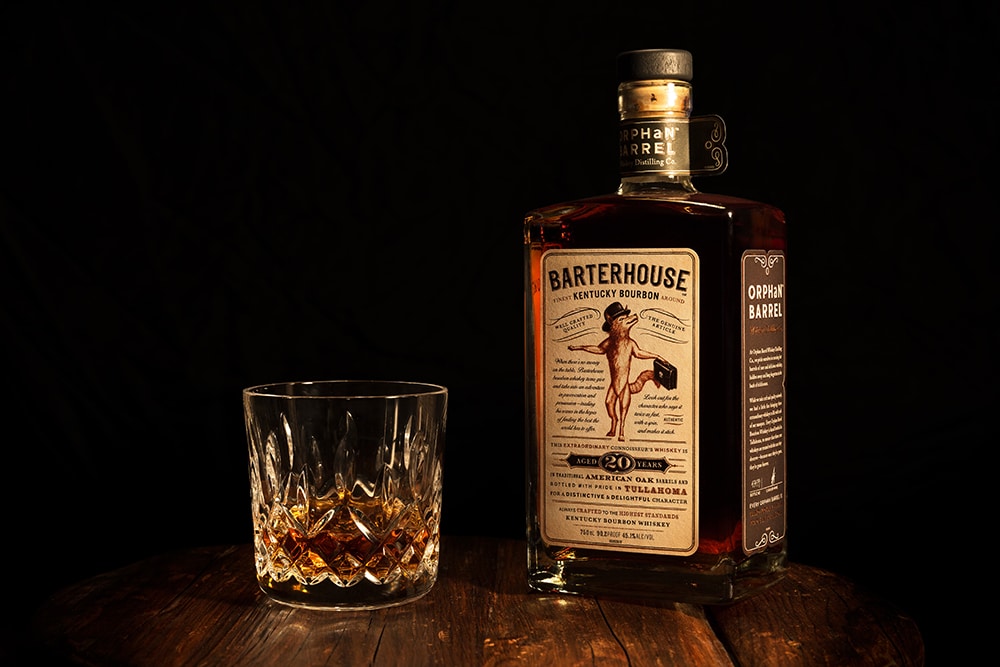
This breakdown of labeling requirements for beer, wine and spirits will be a good start for brands just beginning to think about labeling their products. While working through the regulations on your own as a company is 100% doable, for extra assistance and assurance we recommend using a professional service like the folk at Malkin Law Firm:
Malkin Law, P.A.
260 95th Street, Suite 206
Miami Beach, FL 33154
Office: (305) 763-8539
Mobile: (646) 345-8639
Email: ryan@malkin.law
Are you ready for Branding & Packaging?

Have you chosen your product? For example, for a wine brand part of the design process depends on where your wine is from. What are the notes? Where was the varietal grown? What is your connection to this wine? These are important elements to building your brand story.
Are you ready to start your new brand or rebrand your alcohol? You can see samples of our work, here.


